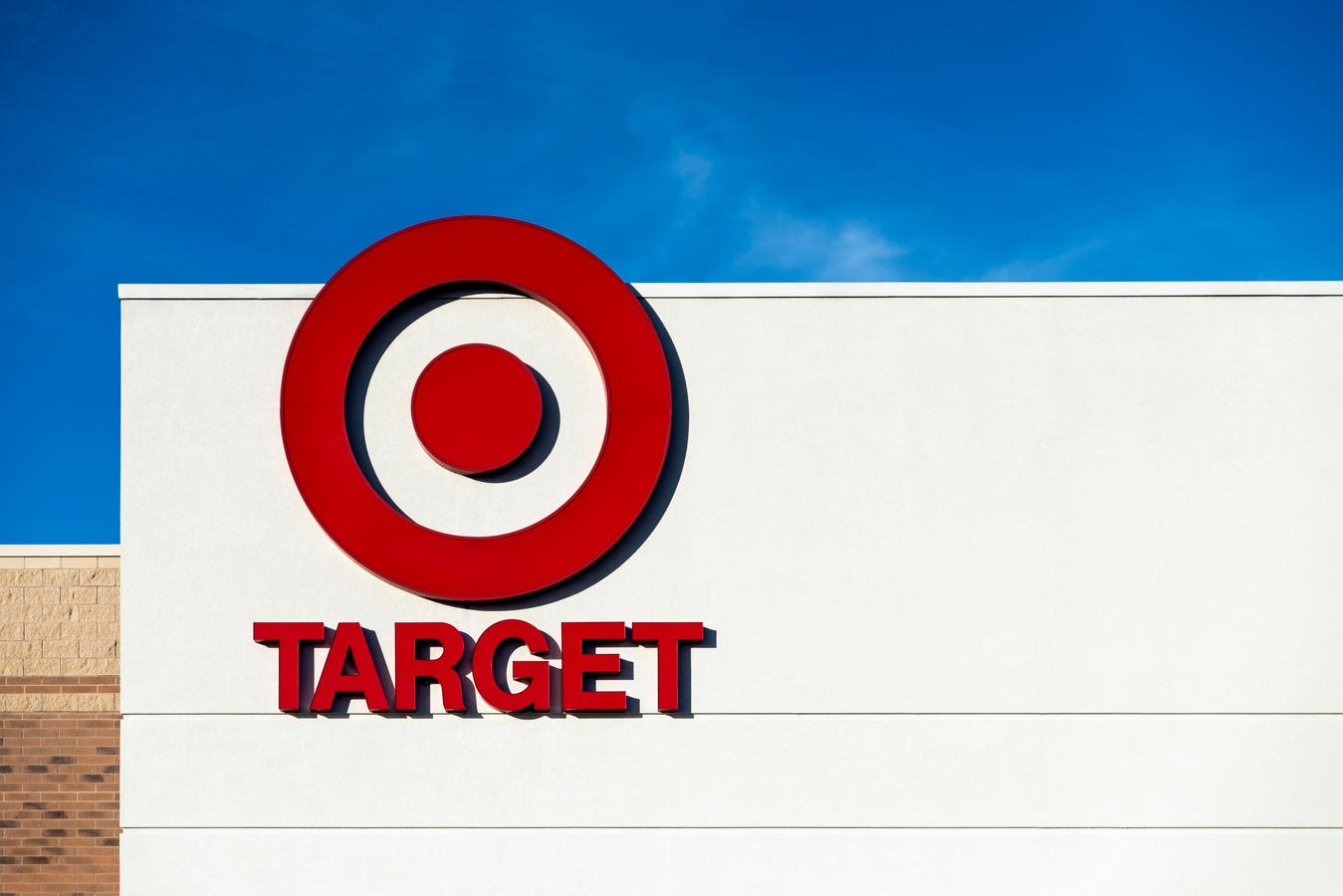[Note: Target’s
TGT
Target (NYSE: TGT), the second-largest discount chain in the U.S, currently trades at $106 per share, around 60% below its level of $266 seen on November 16, 2021 (pre-inflation shock high), and has the potential for sizable gains. TGT saw its stock trading at around $138 on June 22, 2022, when the Fed kept increasing rates, and now remains down by about 24% from those levels. The retailer’s stock decline can be attributed to shifting consumer sentiment and slowing company sales. Consumers are still pulling back on discretionary purchases. Target’s Q2 revenue fell 5% year-over-year (y-o-y) to $25 billion due to a 5.4% decline in comparable sales. Further, comparable digital sales also fell 10.5% in Q2. However, the retailer lapped a period with unusually high inventory levels in the year-ago quarter and made progress on initiatives to improve its gross profit margin. TGT reduced its inventory by 17% y-o-y, which helped drive gross margin up from 21.5% in Q2 2022 to 27% in Q2 2023. Consequently, Target’s operating income improved by 360 basis points to 4.8% and adjusted earnings per share quadrupled from $0.39 in Q2 2022 to $1.80 in Q2 2023. Having said that, the company’s next few quarters could continue to show sluggish sales trends that reflect weak demand for some key product lines. We expect the company shares to likely remain under pressure in the short term.
Interestingly, Target’s stock had a Sharpe Ratio of 0.4 since early 2017, which is lower than the figure of 0.6 for the S&P 500 Index over the same period. Compare this with the Sharpe of 1.2 for the Trefis Reinforced Value portfolio. Sharpe is a measure of return per unit of risk, and high-performance portfolios can provide the best of both worlds.
Returning to the pre-inflation shock level means that TGT will have to gain about 152% from here. While it has the potential to recover to those levels, we estimate Target’s Valuation to be around $138 per share, almost 30% higher than the current market price. Our detailed analysis of Target’s upside post-inflation shock captures trends in the company’s stock during the turbulent market conditions seen over 2022 and compares these trends to the stock’s performance during the 2008 recession.
2022 Inflation Shock
Timeline of Inflation Shock So Far:
- 2020 – early 2021: Increase in money supply to cushion the impact of lockdowns led to high demand for goods; producers were unable to match up.
- Early 2021: Shipping snarls and worker shortages from the coronavirus pandemic continue to hurt the supply
- April 2021: Inflation rates cross 4% and increase rapidly
- Early 2022: Energy and food prices spike due to the Russian invasion of Ukraine. Fed begins its rate hike process
- June 2022: Inflation levels peak at 9% – the highest level in 40 years. S&P 500 index declines more than 20% from peak levels.
- July – September 2022: Fed hikes interest rates aggressively – resulting in an initial recovery in the S&P 500 followed by another sharp decline
- October 2022 – July 2023: Fed continues rate hike process; improving market sentiments help S&P500 recoup some of its losses
- Since August 2023: Fed keeps interest rates unchanged to quell fears of a recession, although another rate hike remains on the cards.
In contrast, here’s how TGT stock and the broader market performed during the 2007/2008 crisis.
Timeline of 2007-08 Crisis
- 10/1/2007: Approximate pre-crisis peak in S&P 500 index
- 9/1/2008 – 10/1/2008: Accelerated market decline corresponding to Lehman bankruptcy filing (9/15/08)
- 3/1/2009: Approximate bottoming out of S&P 500 index
- 12/31/2009: Initial recovery to levels before accelerated decline (around 9/1/2008)
TGT and S&P 500 Performance During 2007-08 Crisis
TGT stock declined from nearly $65 in October 2007 (pre-crisis peak) to around $28 in March 2009 (as the markets bottomed out), implying that TGT stock lost almost 56% of its pre-crisis value. It recovered from the 2008 crisis to levels of around $48 in early 2010, rising roughly 71% between March 2009 and January 2010. The S&P 500 Index saw a decline of 51%, falling from levels of 1,540 in September 2007 to 757 in March 2009. It then rallied 48% between March 2009 and January 2010 to reach levels of 1,124.
Target’s Fundamentals Over Recent Years
TGT revenues increased from around $78 billion in 2019 to about $94 billion in 2020, due to the impact of Covid-19. Consumers stocked up on essentials which gave Target an edge over other retailers during this period. Moreover, sales rose to $109 billion in 2022, as demand picked up further. Earnings per share grew from around $6.42 in 2019 to $8.72 in 2020, although it rose to about $14.23 in 2021 before falling hard to $6.02 in 2022. In 2022, inflation curbed consumer spending and pushed up freight costs for the company, as well as supply chain challenges. The company struggled with high levels of inflated inventory during this period which led to steep markdowns.
Conclusion
With the Fed’s efforts to tame runaway inflation rates helping market sentiment, we believe TGT stock has the potential for strong gains once fears of a potential recession are allayed.
It is helpful to see how its peers stack up. TGT Peers shows how Target’s stock compares against peers on metrics that matter. You will find other useful comparisons for companies across industries at Peer Comparisons.
Invest with Trefis Market Beating Portfolios
See all Trefis Price Estimates
Read the full article here













Leave a Reply